Research: Aesthetics & learning
Why Aesthetics?
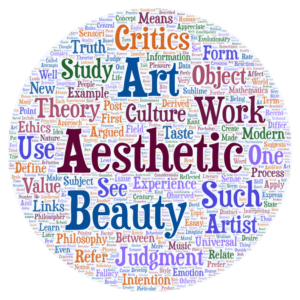
A child’s first experience, of peeking through a telescope to see the vivid sharply etched, yet fragile, rings of Saturn is a powerful one; perhaps as powerful as standing amidst redwood trees listening to the sound of wind rustling through the leaves or experiencing a moment of clarity when an elegant geometrical proof, surprising in its simplicity, emerges from a chaos of sketches and doodles. It is in this sense of awe and wonder that our minds nibble at confronting powerful ideas such as infinity (whether the infinity of numbers, or the interminably large scale of the cosmos, or the immeasurably small universe of cells and atoms and quarks). The emotional turbulence that overwhelms us when we reflect on nature, truly understand a scientific idea, or solve a tricky mathematical or engineering problem often leads to powerful aesthetic experiences. These experiences, we argue, are no different or less than the aesthetic experience we have in engaging with powerful artistic human creations, be it music or the visual arts.
That said, the role of the aesthetic has often been ignored in the discussion on learning. And I truly believe that is a huge mistake on our part.
On designing aesthetic educational
experiences in science
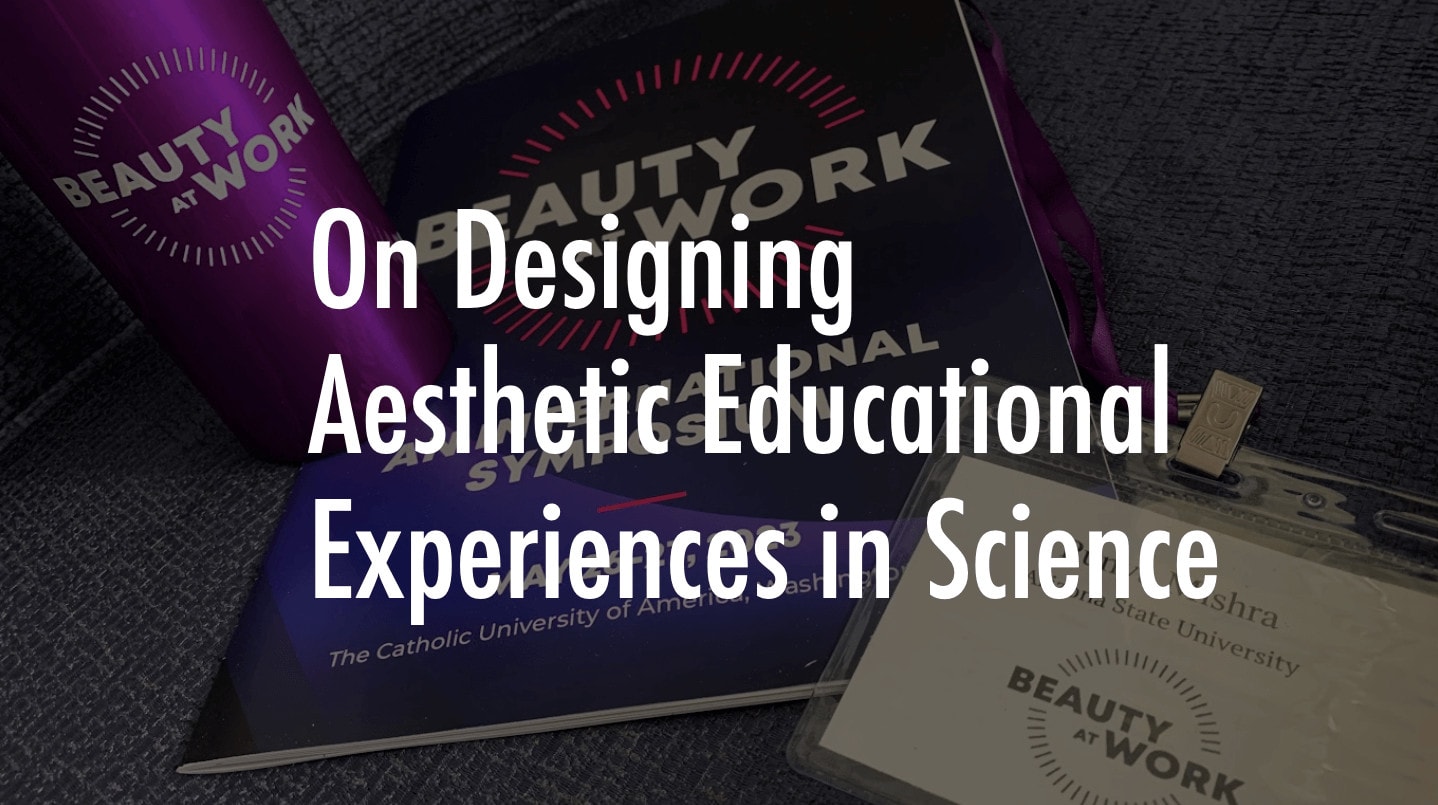
I was invited to give a presentation on this topic at conference titled Beauty at Work: An International Symposium at the Catholic University of America, in Washington DC (May 2023). I was part of a session on Aesthetic Properties and Scientific Information, along with Myron Penner (a philosopher of science from Trinity Western University); Amanda Nichols (professor of chemistry from Oklahoma Christian University); Milena Ivanova (from Fitzwilliam College, Cambridge); and Rebecca Kamen (artist in residence at the University of Pennsylvania). More details about the conference and a video of my talk (On designing aesthetic educational experiences in science) can be found here.
Aesthetics & coding
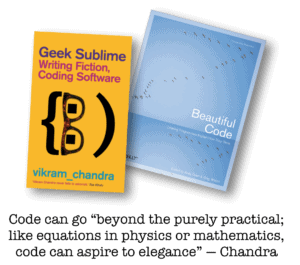
Does beauty have a role to play in learning to code? Can code aspire to beauty and elegance? In this article (Good, Keenan, & Mishra, 2016, titled Education:=Coding + Aesthetics), we argue that it does and it should.
Mathematical poetry
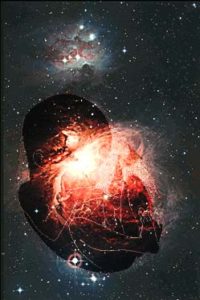
What does mathematics have to do with poetry? Not much, at one level, but a lot at another. Though their goals may be different, both mathematicians and poets play with structure and form, seek elegance and parsimony in their work. And in their own way they strive for truth and beauty—defined within the rules and structures of their discipline. I have loved both mathematics and poetry – with little or no success in each. But over the years I have played little games with both and some of these explorations are presented here.
Why aesthetics is essential (for science education)
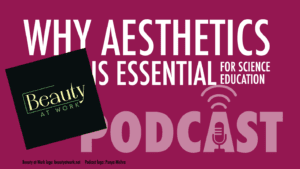
Beauty at Work is a podcast that “explores how beauty shapes our lives and the work that we do” hosted by Brandon Vaidyanathan, Associate Professor of Sociology at The Catholic University of America. In its first season the focus is on beauty in science. As part of this series, Brandon has spoken with physicists, philosophers, psychiatrists, neuroscientists, entrepreneurs, psychologists and more. I was lucky to be a guest on this podcast, in an episode titled: Why Aesthetics is Essential for Science Education.
Why Teachers should care about beauty
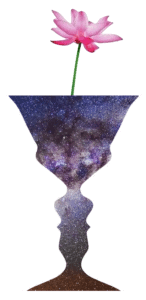
In the article for the journal iWonder (Why teachers should care about beauty in science) – we explored the role of beauty in science education. In this piece, targeted at science educators, we use research in science education to highlight the importance of teachers consciously making connections to aesthetic aspects of science. Caring about beauty in science can inspire a sense of wonder and curiosity.
Aesthetics and STEM education
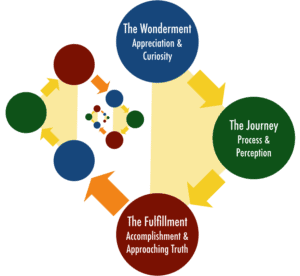
Developing a Rhetoric of Aesthetics: The (Often) Forgotten Link Between Art and STEM is an article that digs into these ideas in depth. In essence, this article is an extended argument that builds on several lines of work including philosophy, psychology, history and biography, in order to promote a model of learning based on aesthetic ways of knowing, thinking, and exploring the world. This emphasizes key impulses that make us human. We provide a generative three-fold fractal framework that seeks to capture the entire cycle of engaging in STEM practices: from curiosity to the process of seeking answers, to a sense of completion that in turn leads to new curiosities to explore. We suggest that this leads to a powerful virtuous cycle that seeks to maintain the same sequence at different levels of learning—from the beginner to the professional scientist, mathematician, or engineer.
Of Art & algorithms
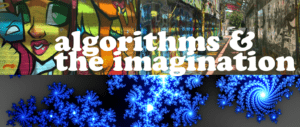
In a couple of articles (most importantly Mishra & Yadav, 2013 and Evans, Henriksen, & Mishra, 2019) we argue that the partnership of deep human content knowledge with new technological advances can lead to deeper and more profound creative insights. We explore how computational thinking, combined with deep knowledge of a discipline, can lead to creative solutions that could not have been possible before. Thus the creative output is not determined by only the individual or the technology, but rather through a “partnership” between the two.
Blog posts related to aesthetics, beauty and learning
A chat about GPT3 (and other forms of alien intelligence)
We recently celebrated the 10-year anniversary of writing a regular column series on Rethinking Technology & Creativity in Education for the journal TechTrends. Over the next few articles in this series, we are going to dive deeper into Artificial Intelligence...
Tell me a story: Delightful design in an airport
“Design doesn’t need to be delightful for it to work, but that’s like saying food doesn’t need to be tasty to keep us alive” — Frank Chimero I am always looking for examples of good and bad design in the world around me. Good design is rare, functional and at the same...
Learning styles in the classroom? What BS! (But Bing Chat doesn’t care.)
One of the most enduring myths in education is that of learning styles. I had written about it back in 2009 in a blog post titled: Teaching to learning styles: What hogwash. But it a myth that does not seem to go away, maybe because it seems to have some kind of...
ChatGPT3 writes a Mathematical Proof (in verse)
Many years ago I got interested in writing poetry about mathematics (all archived on my Math-Poetry page). Just to be clear, I am not a good poet (far from it) and I am even less of a mathematician—but it was a fun exercise to engage in. That said, a couple of my...
Bringing Design to Education: IDC Talks
I was recently invited to speak at a series organized by alumni of the IDC School of Design, IIT Powai. As an alum of the same institution it was a great honor to be invited. You can see the entire series here (and I must say there are some awesome speakers there). My...
Aesthetics and science education: Beauty at Work podcast
Beauty at Work is a podcast that "explores how beauty shapes our lives and the work that we do" hosted by Brandon Vaidyanathan, Associate Professor of Sociology at The Catholic University of America. In its first season the focus is on beauty in science. As part of...
Creative Provocations: Speculations on the future of creativity, technology & learning (New Book)
I am excited to announce the publication of a new book, edited by Danah Henriksen and yours truly. Titled Creative Provocations: Speculations on the future of creativity, technology & learning, it is part of the Springer series on Creativity Theory and Action in...
15 years of blogging
January 1, 2008. 15 years ago, almost to the day - I posted my first note to this website (screenshot below). My first blog post, dated Jan 1, 2008 I have had a web presence since 1998 - hand coded, HTML pages, traces of which are still available on the Wayback...
Flip/Flop: Goodbye 2022 – Welcome 2023
Since 2008 our family has been creating short videos to celebrate the end of one year and the beginning of another. Our videos are always typographical in nature with some kind of an AHA! moment or optical illusion built in. This year’s video is no different. Check it...
Speculative fiction and the future of learning
One of the most fun projects I have been part of was working with authors of speculative fiction around the futures of learning. This was the result of a collaboration with the Center for Science and the Imagination, Slate magazine and New America (supported by the...
Exploring Organizational Creativity & Mindfulness with Ravi Kudesia
Recently our on-going series on creativity, technology and learning for the journal TechTrends has focused on the relationship between mindfulness and creativity, particularly in educational contexts. Our first article set the stage for a deeper dive into this...
McLuhan on Silver Lining for Learning (5/3)
This is the fifth of what was supposed to be a three post-series about how media influence our thinking. The first post, uses the invention of writing and print to unpack the meaning of McLuhan’s statement, “The medium is the message.” The second post, focuses on a...
Uncertainty, Creativity & Mindfulness: New chapter
Danah Henriksen, Carmen Richardson, Natalie Gruber and just published a chapter (titled: Uncertainity, Creativity & Mindfulness: Opening Possibilities and Reducing Restrictions Through Mindfulness) in the edited volume: Uncertainty: A Catalyst for Creativity....
Rethinking Creativity, Race, Culture & Education
Episode 115 (dated July 30, 2022) of the Silver Lining for Learning webinar series focused on critiquing existing research on creativity - which for the most part has focused on the psychological and cognitive aspects of creativity. The guests on the show (Lori Patton...
The futures of higher ed with Phoebe Wagner
The Center for Science and the Imagination at ASU runs a series of short stories and virtual gatherings that explore issues related to transformative change. Essentially they solicit and publish a (super-short) short story that explores “themes of community,...
